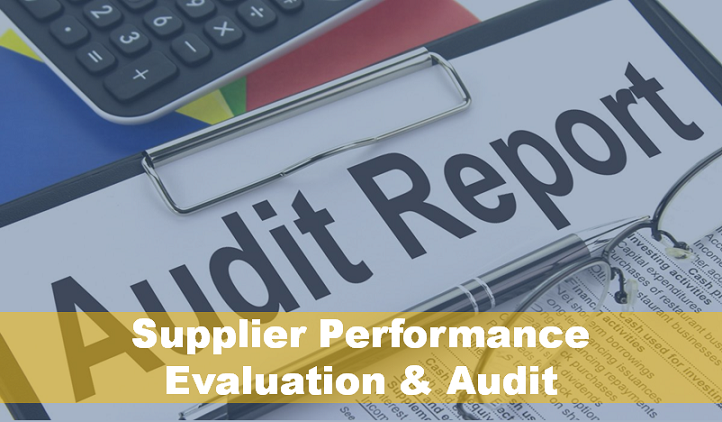Global Sourcing & Procurement
Outsourcing Service Center
In China
Export Business on Advanced Material & Precision Parts


Supplier Performance Evaluation & Audit
Supplier Management
Supplier management is a structured program to manage suppliers and improve their impact on the buyer’s business.
Supplier management is a Dynamic Management Process and including
1 New potential supplier introduction and assessment
Supplier potential development and process capability assessment
Supplier QTP Evaluation System for Potential Quality and Technical Capability
2 Supplier selection decision matrix
3 Supplier risk management
4 Supplier performance management
5 Supplier Audit
6 Disqualified supplier elimination
7 Supplier development
Supplier Performance Management
Supplier performance management including three levels of evaluation:
SPE: Supplier Performance Evaluation
SLA: Supplier Lean Assessment
SPP: Supplier Potential Evaluation
Supplier performance management involves activities that focus on improving the performance and capability of suppliers. The primary logic of managing supplier performances is that both parties will share in the benefits of better performance, better quality, shorter cycle times and/or lower costs.
Supplier Relationship Management
Working with suppliers is no longer a simple task of selecting the best quality for the best price. Competitive markets make increased collaboration and integration with your most strategic suppliers more important than ever before.
Managing relationships with suppliers is an essential component of obtaining a long-lasting supply advantage. Many companies have a rudimentary supplier relationship management (SRM) process in place, but often lack focus and clear strategy. As a result, SRM ends up as another way of trying to further squeeze supplier margin in a confrontational win-lose approach. Because leading organizations set up a clear value agenda in a win-win, collaborative framework (with suppliers and internal business partners), they manage to unleash the full energy of their supply partners to drive broader business objectives in cost and beyond.
Hay Think observes three stages of excellence in supplier relationship management. In the basic stage, companies have a defined process to transition suppliers in and out, manage their performance using scorecards, and conduct a high level supplier segmentation. More advanced practitioners use a more robust segmentation, single out critical suppliers, and define detailed models to guide their interactions. Leading organizations build a collaboration portfolio of key suppliers that are selectively integrated into the company`s key processes.
Companies that are able to unleash supplier energy generate over 10 percent additional value across a virtually integrated supply chain.
Supplier partnerships often do not achieve the desired benefits expected from the investments made and, many times, this area of procurement receives too little attention and budget, or is not involved in product-development decisions early enough. We help you develop comprehensive supplier relationship and performance management programs as part of their overall supplier relationship management (SRM) process to manage risk, encourage innovation, generate returns, and identify additional cost-saving opportunities.
Hay Think’s Procurement Practice helps companies develop strategic supplier relationships that yield significant benefits for both parties. These multifaceted business relationships are viewed along four primary dimensions: strategic value, economic value, performance, and risk management. SRM is a systematic approach that segments, analyzes, and aligns customer-supplier relationships to develop ongoing value.
Supplier Relationship Management shows concrete ways to increase procurement power.
Supplier-Driven Innovation
With procurement increasingly contributing value beyond cost, the function is serving to link innovation-focused suppliers with the business in general. The earlier suppliers can be brought into the product and service development process, the more quickly new offerings can be launched. A relentless focus on execution and the establishment of long-term relationships to get the best possible supplier innovations are vital.
Exploiting the supply base’s innovation capability through a systematic innovation management process helps create products and services with shorter time to market, lower execution risk, higher quality, and ultimately, more profitable commercialization. Finding which suppliers to involve requires a formal, wide-ranging scanning process. Open-mindedness is also essential; companies have enjoyed significant successes by partnering with nontraditional suppliers, often from noncompeting industries, that bring new “outside-the-box” ideas. Increasingly, companies are heavily weighing innovation capability in their supplier evaluation process.
While suppliers are not the sole source of external innovation, they are consistently cited as essential contributors to idea generation, product and process development, and implementation and launch. Sources such as customers, academics, and market research are more typically involved in ideation activities.
Risk Management
Managing supply risk is an integral part of achieving excellence in procurement. We help corporate leaders mitigate risk in a number of ways: developing strategies that ensure supply continuity, creating contingency plans, aligning supply security with overall business risk, and measuring and tracking KPIs.
Our comprehensive approach to risk management helps you tackle several key areas. We help you define the potential risks and your objectives, and understand the current supply chain dynamics. We deploy category strategies that shift the supply-demand balance in key categories, define smart contracting strategies, and help you employ financial hedging where necessary. Lastly, we help you create the processes and organization needed to manage risk over the long term.
New supplier fact-check and information
New supplier on-site assessment report
Supplier performance data including:
Cost data
Quality data
Logistics data
Business & operation data
Risk Monitoring and mitigation measures
Supplier performance evaluation report
SPE: Supplier Performance Evaluation report
SLA: Supplier Lean Assessment report
SPP: Supplier Potential Evaluation report
Supplier audit report
…
You can learn the updated and true fact information about your vendors even you are tens thousands miles away.
Supplier performance excellence would reduce your procurement costs and increase your company value,and achieve sustainable competitive advantage
